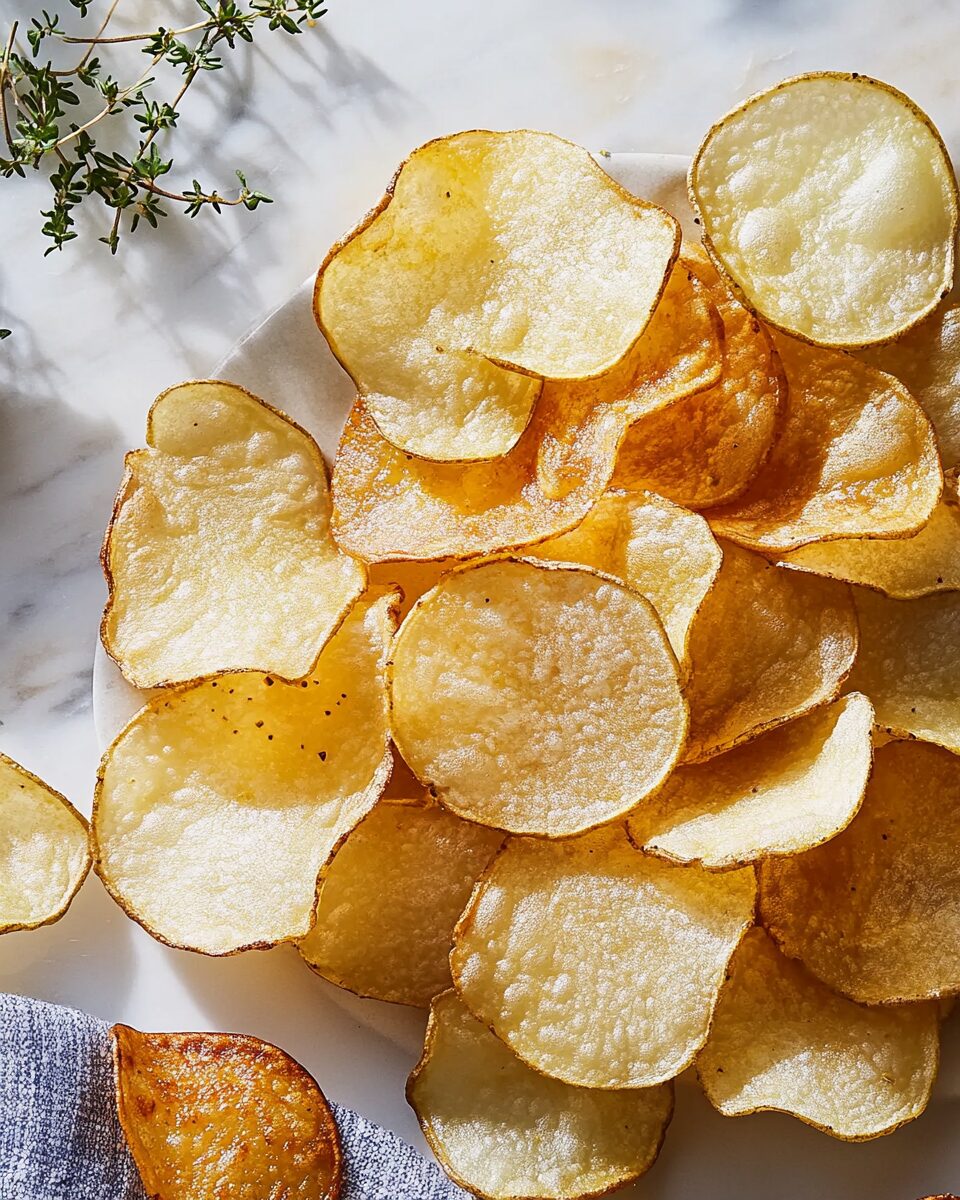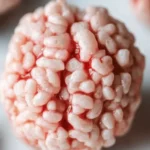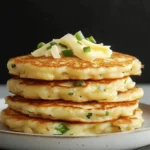Ingredients Breakdown
Here’s a simple list of ingredients you’ll need to prepare homestyle potato chips:
- 4 medium potatoes: Any variety works, but Russet potatoes are a great choice due to their high starch content, which helps achieve crispiness.
- Salt to taste: This is used in soaking the potatoes and as seasoning after frying. You can experiment with different salts, such as sea salt, Himalayan pink salt, or even garlic salt.
- Vegetable oil for frying: Oils with a high smoke point, such as canola, peanut, or sunflower oil, are ideal. Olive oil can also be used for a lighter flavor, but it has a lower smoke point.
The simplicity of the ingredient list is part of the charm, making it a versatile snack that can be adjusted to suit your taste and dietary needs.
Step-by-Step Instructions
1. Preparation of Potatoes
Start by selecting fresh potatoes, and wash them thoroughly to remove any dirt or residue. You can peel the potatoes for a more classic look, but leaving the skin on adds an earthy flavor and rustic texture.
- Slice the potatoes: Use a sharp knife or a mandoline slicer to achieve uniform, paper-thin slices (about 1/16 inch thick). The thickness of the slices is crucial because thinner slices fry quicker and get crisper.
- Soak in Salted Water: Once sliced, place the potato slices in a large bowl of salted water. Soaking the potatoes helps to remove excess starch, resulting in a crispier chip. Let the potatoes sit in the water for at least 30 minutes, but you can also soak them longer (up to 2 hours). This step also helps to prevent the slices from sticking together during frying.
2. Dry the Potatoes
After soaking, it’s crucial to dry the potatoes thoroughly. Use paper towels or a clean kitchen towel to blot away excess moisture. This ensures the chips won’t splatter in hot oil, and it also contributes to a better texture. Any moisture left on the potatoes will cause the oil temperature to drop, making them greasy instead of crisp.
3. Heat the Oil
In a deep frying pan or a heavy-bottomed pot, heat the oil to 365°F (185°C). Use a thermometer to monitor the temperature, as maintaining the right heat level is key for ensuring the chips cook evenly and don’t absorb too much oil. If you don’t have a thermometer, test the oil by dropping in one slice of potato—it should sizzle immediately but not burn.
4. Frying the Chips
- Work in small batches to avoid overcrowding the pan. Overcrowding lowers the oil temperature and leads to soggy chips.
- Fry the potato slices for about 3-5 minutes per batch, or until they turn a beautiful golden-brown color. Stir occasionally to prevent sticking.
- Once the chips are fried, use a slotted spoon or a mesh strainer to remove them from the oil. Place them on a plate lined with paper towels to drain excess oil.
5. Seasoning
While the chips are still hot, sprinkle them with salt. This is the basic seasoning, but you can also get creative here by adding different flavors. Some great options include:
- Smoked paprika for a smoky, savory kick.
- Garlic powder and onion powder for a more robust taste.
- Cajun seasoning or chili powder for a spicy edge.
- Cheese powder for a cheesy twist.
Tips for the Best Homemade Potato Chips
- Choosing the Right Potatoes: Starchy potatoes like Russets or Yukon Gold work best because of their low moisture content. This helps them get crispy.
- Oil Temperature: Make sure your oil stays at 365°F. If the oil is too cool, the chips will absorb oil and become soggy. If it’s too hot, they’ll burn quickly.
- Uniform Slicing: Using a mandoline slicer ensures all slices are the same thickness, which allows them to cook evenly. Inconsistent slices can result in some chips being undercooked and others overdone.
- Flavor Variations: After mastering the basic recipe, experiment with flavorings such as barbecue seasoning, ranch powder, or even a sprinkle of truffle salt for a gourmet touch.
Nutritional Information
Homemade potato chips, like anything fried, should be enjoyed in moderation. Here’s an approximate breakdown per serving (for about 8 servings):
- Calories: 180-200 per serving
- Fat: 10-12g
- Carbohydrates: 20-25g
- Protein: 2g
- Sodium: Varies depending on the amount of salt added
You can reduce the fat content by opting to bake the potato chips instead of frying them. To do this, preheat the oven to 400°F, arrange the slices on a baking sheet, brush lightly with oil, and bake for about 20-25 minutes, flipping halfway through.
Storing Homemade Potato Chips
If you have leftover chips (though that’s unlikely!), let them cool completely before storing. Place them in an airtight container to maintain their crispiness for up to a week. Avoid storing them in the refrigerator, as the moisture will make them soggy.
Conclusion
Homestyle potato chips are a perfect example of how simple ingredients can turn into an addictive snack with just a little bit of effort. By following these steps, you can create crispy, golden chips that rival any store-bought version. Whether you’re serving them at a gathering, pairing them with your favorite dips, or simply enjoying them as a snack, these homemade chips are sure to be a hit.
The ability to customize flavors and use healthier oils or methods like baking offers endless possibilities, allowing you to create your unique twist on this classic snack. So the next time you’re craving something crispy, why not try making your own potato chips? You’ll appreciate the fresh taste and the satisfaction of knowing exactly what’s in your snack!






